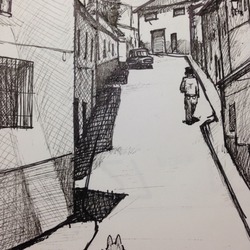Nara Toyosawa
Abunaga Sake Brewery
Kaze no Mori WEEKS 2025 Aiyama 607

Chiyo shuzou
Shinomine Junmai Daiginjo Yamahai Yamadanishiki
Shinomine, Junmai Daiginjo,Yamahai/ Chiyo Shuzo/ Nara prefecture/ rice species: Yamadanishiki/ light note of minerals, citrus and apricot, crispy acid and good edge of bitterness, soft and light umami and rich minerals.
Good for any dishes not only Japanese. Good Yamahai sake. — 6 years ago
Yucho Shuzo Co., Ltd.
Kaze No Mori Tsuyuhakaze 507
Kaze no Mori Tsuyuhakaze 507 (風の森 露葉風 507), a seasonal sake from Yucho Shuzo in Nara Prefecture.
Key points:
• Brand / Series: Kaze no Mori (“Wind of the Forest”) is known for ultra-fresh, lightly sparkling sake bottled immediately after pressing.
• Rice: Tsuyuhakaze (露葉風) is a Nara-only heirloom sake rice.
• Polish ratio: The number 507 means a 50 % polishing ratio with yeast No. 7.
• Style: Typically Junmai Daiginjo-grade in polish, but brewed in their unpasteurized, naturally effervescent house style.
This was all part of our Sake Day 2025 experience. We only tasted 60ish sakes out of an estimated 450, so a small fraction of what was available. While I attempted to rinse the glass with water and stay hydrated it’s difficult to fairly rate in this environment and I use it solely as a time to try a wide variety and interact with the brands. — 2 months ago
Imanishi Shuzou
Mimuro Junmai Ginjo Sake
Mimurosugi Junmai Ginjo. Nara Prefecture, Japan. — 2 years ago
Imanishi Kiyofusea Shoten Co., Ltd.
Haruka
This seasonal sake is called “Jumai Ginjo Namzake” from the Harushika Sake Brewery in Nara, Japan. It is insanely smooth sake that has a subtle cherry fragrance and aftertaste without it being too sweet. It’s one of the best sake’s I’ve tasted! — 7 years ago
Kaze no Mori
Omachi Junmai Sake 2025
Kaze no Mori (“Wind in the Forest”)
• Brewery: Yucho Shuzo, Nara
• Style: Nama (unpasteurized), often Junmai or Junmai Ginjo
• Profile: Kaze no Mori is famous for being zippy, effervescent, and youthful. Expect a lightly sparkling sensation (微発泡), juicy fruit (pear, muscat grape), and bright acidity. Always unpasteurized, so it shows a raw, lively character. Was pretty sweet for me but a nice sake. — 3 months ago
Chiyo shuzou
Shinomine Yamadanishiki Extra Dry Unfiltered Undiluted Unpasteurized Junmai 2025
Shinshu Kamerei (篠峯 / Shinomine)
• Brewery: Miwa Shuzo, Nara
• Style: Often Junmai Ginjo or Junmai Daiginjo, tends toward yamahai-style or richer brews depending on bottling.
• Profile: Compared to the first two, this tends to lean earthy and structured. Expect layers of rice-driven umami, sometimes nutty or lactic, balanced with depth rather than flashiness. Depending on the exact bottling, it may have crisp dryness or a broad, savory weight. This was my favorite of the night. Was a bit austere and sharp but I found the others pretty sweet — 3 months ago
Lou Dumont
Léa Sélection Les Gravières Santenay Pinot Noir 1995
2021/5/16 with rib steak grilled over nara and charcoal, fava beans with pecorino, mustard green salad, and focaccia. This almost feels younger than the 1999 Combe - or at least without that deep bottle bouquet. Instead there is penetrating, brambly red fruit with hints of iron and blood. The mature note is more like a lightly spiced cherry tart. On the palate, there’s even more freshness and intensity - a thick, lip-smacking acidity too. — 5 years ago







Norman
Name: 風の森 WEEKS 2025 (Kaze no Mori Weeks 2025)
• Rice: Aiyama (愛山) 100%
• Polish ratio: 60%
• ABV: 14%
• Sake type: Junmai Muroka Nama Genshu (純米 無濾過無加水生酒)
• Junmai = pure rice (no added alcohol)
• Muroka = unfiltered
• Nama = unpasteurized
• Genshu = undiluted (though note: 14% ABV suggests a lower-ferment genshu or partial dilution)
• Brew year (BY): 2025BY (brewed August 2025)
• Brewery: 油長酒造株式会社 (Yucho Shuzo Co., Ltd.)
• Location: Gose City, Nara Prefecture (奈良県御所市)
Ok brought this one back from Japan so it’s fresh and a limited release as noted above. It’s got some effervescence which I’m not a huge fan of but seeing in a lot of these fresh ones from Japan. Have not sat long enough to absorb back in. If you have not used ChatGPT with sake you should. It’s really good in answering questions. So this has the typical sake flavor, an effervescence but also a weird yogurt tang which evidently is on purpose since this is unpasteurized. The carbonation kills the creaminess you associate with sour cream and yogurt. From ChatGPT - That “yogurt tang but not creamy” description is dead on for fresh Aiyama-based nama. What’s happening chemically is a short-chain lactic ester (mainly ethyl lactate) blending with residual malic acid from the yeast, plus the carbonic lift. The effervescence doesn’t just tingle — it changes how your tongue perceives acidity, pushing that faint yogurt note forward while stripping away the creaminess you’d feel in a heavier sake. So instead of the rounded nama-zake lactic feel, you get something sharper — like unsweetened kefir water or sparkling Calpis.
That’s part of what Kaze no Mori aims for with their Weeks bottlings — letting you taste the micro-volatility of live sake mid-fermentation, before pasteurization smooths it out. It’s not a flaw; it’s an intentional snapshot of the fermentation in motion.
If you swirl it gently and let it sit 10–15 minutes, you’ll notice the carbonation dissipate and that tang retreat into the background, revealing more of Aiyama’s core character — ripe pear, steamed rice sweetness, and faint white flower. But if you like that “what is that?” moment — slightly wild, slightly sparkling, tang balanced by fruit — it’s best drunk exactly as you’re having it now. Cold (right out of the fridge, say 5–8°C) locks in the CO₂ and accentuates that “live” edge — the effervescence plus that lactic-malic twang that feels more like tangy minerality than cream. At that temp, Aiyama’s natural softness is suppressed, so what comes through is this precise, slightly electric sensation — like pear skin + Greek yogurt + soda water. If you let it rise toward 12–14°C, the CO₂ eases, sweetness unfolds, and the tang will start to blur into a gentler rice-fruit tone.
Because this bottle is both muroka (unfiltered) and nama (unpasteurized), it’s carrying a small live microflora load — you’re literally tasting that tension between residual yeast enzymes and trapped gas. It’s why the first sip is so vivid and almost curious — not quite sour, not quite sweet, but alive. — 2 months ago